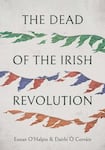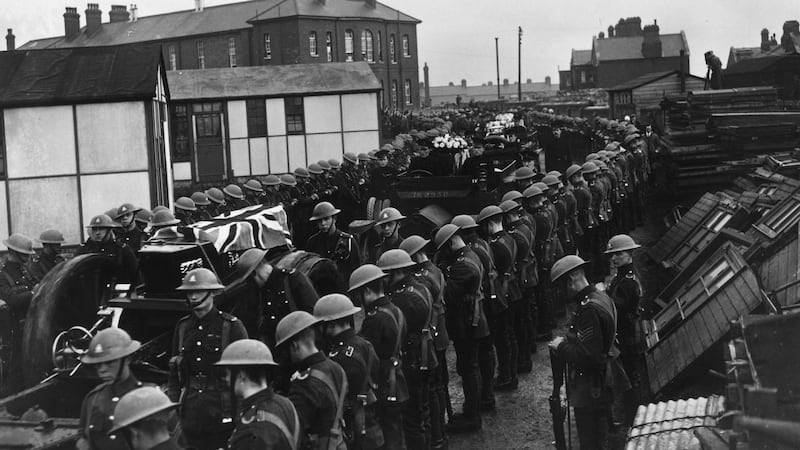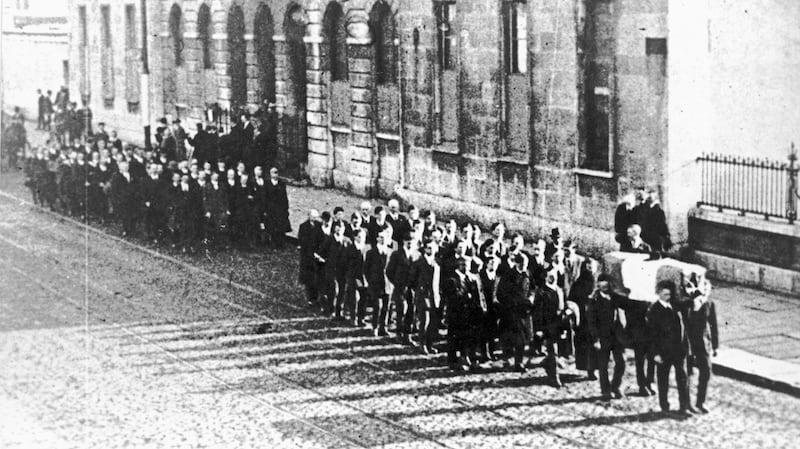
When presented with statistical data on human suffering and death, we oscillate between being obsessed with the numbers and being utterly inured to them. The intimacy of the context is critical. In the current pandemic the daily bulletins have created thousands of armchair statisticians: parsing the significance of “flattening the curve”, levels of hospitalisation and ICU occupancy and the R number. On the other hand, the sheer scale of the human catastrophe in Yemen or of the displacement levels in numerous other global crisis spots seems to defy our comprehension.
Broadcasters are regularly advised that telling a compelling human story is more likely to hold the attention of an audience than a barrage of figures. Eunan O’Halpin and Daithí Ó Corráin, the authors of this important new study of the fatalities of the Irish revolution, succeed magnificently in combining the statistics and the stories, in a volume that will surely serve as the indispensable reference work on this topic for the foreseeable future.
Acknowledging earlier and ongoing inventories, and with a sharply incisive introduction by O’Halpin, the book provides individual entries (of varying length) for 2,253 deaths. Each entry gives the name, age, affiliation (IRA, RIC etc), religion, place and date of death, an account of the circumstances of the death, and a note on whether financial compensation – pension or gratuity – was made to the surviving dependents of the deceased. It is a truly remarkable feat of close scholarship and calm exposition, based on an exhaustive mining of a wealth of primary source material.
The total number of deaths arising from political violence during 1916-1921 is enumerated here at 2,850, of which 504 were during the 1916 Rising and its aftermath and 2,346 between January 1917 and December 1921. The 1916 deaths were overwhelmingly in Dublin city and the majority (276) were civilians.
In the second phase, while no county remained unaffected, the heaviest fatalities (in actual numbers and in proportion to the population) were in the south, in counties Cork, Tipperary, Limerick, Kerry and Clare, together with the major urban centres of Dublin and Belfast. In this phase, with intensifying guerrilla warfare in 1920/21, civilian deaths accounted for less than half of the total, with most of the military and IRA fatalities being young men in their 20s and 30s.

The main categories of fatality are as one might expect: those killed in ambushes and firefights; attacks on barracks and houses; executions, assassinations, reprisals; deaths through accidental or careless discharge of firearms; civilians run down or crushed by military vehicles; suicides; and – the category used to cover many summary killings by crown forces – those shot while “trying to escape” or who failed to heed the order to “halt”. But a clutch of fatalities also resulted from various forms of septicaemia, arising from injuries received in violent incidents.
‘Out-terrorising the terrorists’
The evidence strongly supports the verdict that when the gloves came off in the British government’s counter-insurgency strategy from early 1920 (notably with the arrival of the Black and Tans and Auxiliaries), all elements of the crown forces enjoyed virtual immunity from normal sanctions for criminal behaviour, including illegal killing.
Despite the gruesome litany of killings by crown death squads set out in this book, only one policeman was hanged for murder between 1916 and 1921. Unleashing terror and indiscriminate reprisals on the civilian population - through the burning and looting of houses, creameries and other businesses, in addition to reckless shooting from moving vehicles, became acceptable crown tactics in “out-terrorising the terrorists”.
The number of female fatalities was relatively low (4 per cent of the total). This is not to say, of course, that various forms of intimidation and violence (including sexual) were not inflicted on women in the course of the conflict. Indeed, recent research has highlighted the possibility that violence against women may have gone under-recorded because of reticence within families and communities to publicly acknowledge such incidents. But, apart from a handful directly targeted, most female fatalities resulted from being in the wrong place at the wrong time, or through association with “marked” men.
Inevitably, some entries will ignite debate and controversy; after all, the authors make judgment calls on episodes where the surviving evidence is contradictory and contested. This is particularly likely in the case of the sensitive issue of the shooting of captured combatants and the execution by the IRA of alleged informers or spies.
The litany of such executions – and the details on the disposal of bodies – makes for grim reading. The authors, in describing one such execution of suspected deserters in June 1921, suggest that it illustrates how “the imperatives of security sometimes outweighed considerations of humanity”. But the evidence demonstrates that considerations of humanity were also regularly eclipsed by impulses much darker, perhaps, than straightforward concerns for security. The heroic and the heartless regularly march in step.
Sectarianism
In the six counties of Ulster that from 1920 would constitute Northern Ireland, there were distinctive features to the pattern of violent deaths. The level of political violence was low in the northeast in the aftermath of the 1916 Rising. But in 1920/21, as the War of Independence raged in the South and northern unionists moved towards the establishment of their own devolved Northern Ireland state, deep communal divisions flared into violence, predominantly in urban Belfast and Derry.
Four-fifths of the Belfast fatalities of this violence were civilians; victims such as 60-year-old Margaret Millar, who died on November 24th, 1921 “. . . from a chest wound inflicted the previous day by a loyalist sniper. Her son Joseph had been shot dead in June 1921, when she was herself wounded. A daughter lost an eye from a bomb splinter and another daughter was shot in the thigh. Her brother William Kane had his right hand blown off in a bomb explosion.”
There was an inherently sectarian complexion to these recurring spasms of communal violence in urban Ulster, with shootings, bombings and protracted street violence, punctuated by the forceful expulsion of Catholics from neighbourhoods and workplaces by Protestant loyalists, often responding to IRA action against crown forces elsewhere in Ireland.

The matter of whether or to what extent there was a sectarian aspect to political violence in some southern counties remains a vexed question. Many Protestants in the South retained their unionist outlook and political allegiance right up to the establishment of the Irish Free State. More pertinently, the fact that they also maintained their traditional cordial relations – through shared religious worship and social activities– with functionaries of the crown, military and civil, lent an easy credibility to allegations that they were “informers”, whatever the status of the evidence.
Similar allegations, often with fatal consequences, were often made against ex-servicemen, irrespective of religious affiliation. This was especially the case where – as in Cork, in particular, from autumn 1920 to the Truce – IRA concern about security, spies and collaborators was obsessive. However, for a small number of killings described in this book, older resentments concerning land, economic and social privilege and cultural distance, are likely to have contributed to the noxious brew of suspicion from which political violence could emanate.
On closing this absorbing book, the reader is left with a host of disturbing questions, relating to issues of motive and morality, ideals and values. But above all else the cumulative effect of these terse chronicles is an abiding sense of the intimate desolation caused by violent death.
States will commemorate “the fallen”, whether in the service of crown and empire or in the struggle for national independence; but always and everywhere it is families that are left to grieve for their dead.
Gearóid Ó Tuathaigh is professor emeritus in history at NUI Galway. His books include The GAA & Revolution in Ireland 1913-1923















